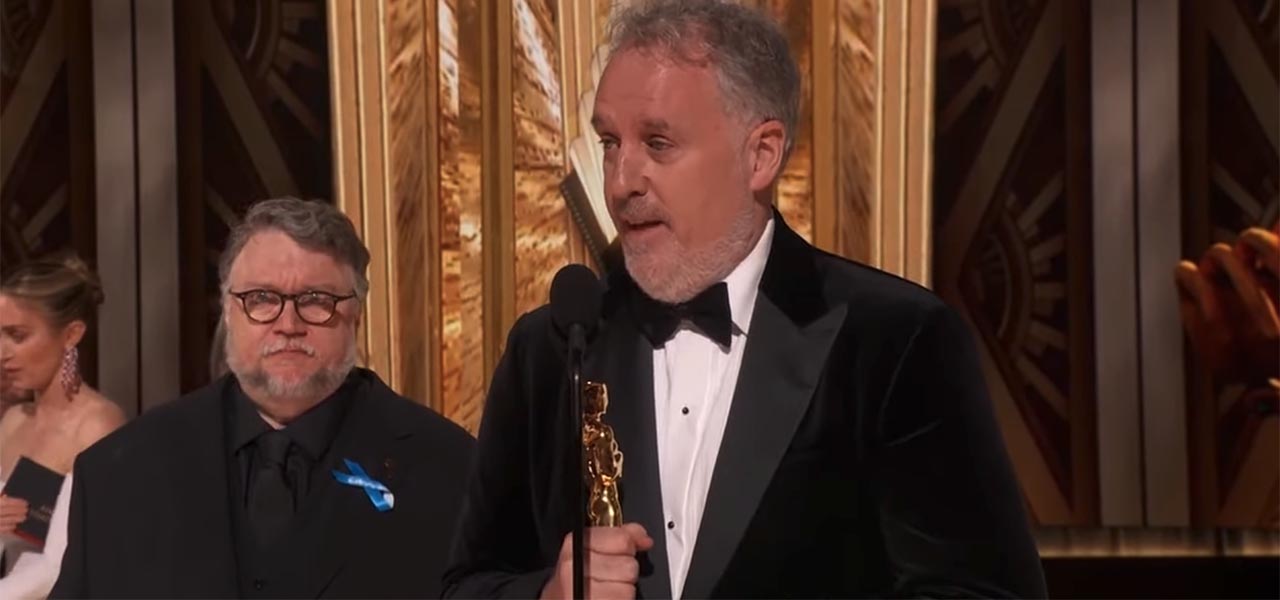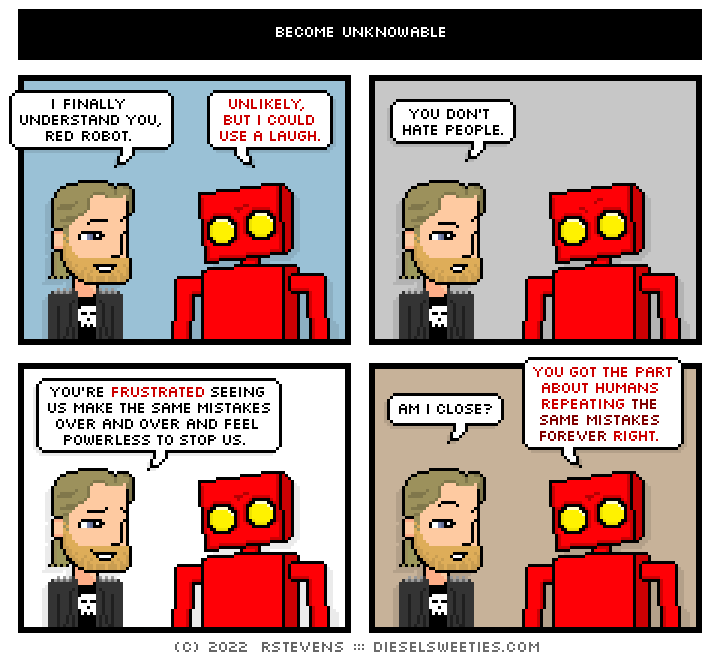Mark Gustafson, a principal figure in the stop-motion animation art form and Oscar-winning co-director of Guillermo del Toro’s Pinocchio, has died at 64 after suffering a heart attack.
In the early 1980s, after earning an art degree from Pacific Northwest College of Art (BFA 1982), Gustafson started working at Portland, Oregon-based Will Vinton Studios as a production assistant. There, he slowly worked his way up through the ranks. Speaking with the Academy last year, Gustafson recalled his early days at the studio fondly, explaining:
When I got that job and I was just sweeping floors and running errands, I thought, ‘Well, I’ve made it! This is it.’ And then you work there, and you wind up helping somebody do something, and you do a decent job at that, so they see you differently. Like, ‘Oh, you can sculpt!’ Or, ‘You can help us build armatures. Then they would move me up into that, and I was like, ‘I’ve made it; now I’m sculpting! This is great. I know what my career is.’ It just marches along, and you just keep getting different things, and, all of a sudden, I found myself animating and then directing.
While at Will Vinton Studios, Gustafson worked as an animator on 1985’s The Adventures of Mark Twain and Return to Oz and produced a diverse body of work, which included the shorts Mr. Resistor and Bride of Resistor.
By the mid-1980s, Gustafson found himself in the director’s chairs on the iconic California Raisins commercials, a beloved ad series that turned a group of dried grapes into pop culture icons. The ads were such a hit that the Raisins eventually got a mockumentary, Meet the Raisins!, which was nominated for an Emmy in 1988. Gustafson served as a writer, producer, and lead animator on the tv special. In a 2002 episode of Food Network’s Unwrapped, Gustafson explained the basics of stop motion to the lay audience:
Gustafson was nominated for another Emmy in 1991 for his contributions to the classic Halloween short Claymation Comedy Horrors and eventually won the award for the 1992 holiday special Claymation Easter.
The California Raisins commercials weren’t the only iconic ads that Gustafson worked on while at Will Vinton Studios. He also directed the impossible-to-forget 1997 “Toys” ad for Nissan, which was recognized as the commercial of the year by Adweek, Time, USA Today, Rolling Stone, and Car and Driver, among others. One of the creative directors on the spot, Rob Siltanen, remembered the huge splash the ad made, which led comedian Jerry Seinfeld to quip that, “More people talked about that Nissan Toys ad than any movie that came out last year.”
When the commercial went the 1997 version of viral, Gustafson was interviewed on the Portland talk show AM Northwest where he attempted to explain why the ad became so popular. “You never know what’s going to strike people’s fancy,” he said. “I think one of the things is we’re sort of dealing with these iconographic figures… We sort of brought them together and added fun music to that in a 60-second commercial where all we were doing was telling a fun kind of story.”
Storytelling was at the heart of everything Gustafson and the Vinton Studios team did and one of the main reasons that so much of their work holds up today, even their commercial work.
In 1999, Gustafson made the leap from ads and shorts to helming a broadcast tv series with the cult classic The PJs, co-created by Eddie Murphy. For his work on the series, he won Annie Award for tv direction. In an interview from around that time, Gustafson said the prospect of doing an entire show in stop motion was a bit overwhelming:
It seems like a bad idea to even attempt doing this much stop motion. My concern was, `How are we going to maintain the quality?’ I’ve done so many commercials, and they take forever. There’s no way we could have done this if we’d approached it the way we do commercials. We had to invent a way to do the show that would really keep the quality because nobody here is interested in doing shlop. So what we tried to do is streamline every aspect of production so that it was all focused on the animation. What it comes down to is getting the animator on the set and in front of a camera so they don’t have to bother with anything else.
Wes Anderson recruited Gustafson to serve as animation director on 2009’s Fantastic Mr. Fox, which was nominated for two Academy Awards, including best animated feature. About the experience of working with Anderson, Gustafson told the Los Angeles Times that, “Honestly? Yeah. He has made our lives miserable,” before adding that, “I probably shouldn’t say that.”
Gustafson also made a personal short They Shot in the Dark (below) about the making of Fantastic Mr. Fox that wittily hints at the challenges of communicating with Anderson. The experience couldn’t have been too bad though because Gustafson again served as animation director for Anderson on a 2012 Sony Xperia commercial.
Gustafson’s career reached new heights in 2022, when Netflix released Guillermo del Toro’s Pinocchio, which went on to win the Oscar for best animated feature last year. It also received a Golden Globe, three VES Awards, and five Annies, including outstanding achievement in directing for del Toro and Gustafson.
In his 1999 The PJs interview, Gustafson was asked about the future of stop-motion, and his answer proved prophetic and still entirely relevant today. “It’s hard to say. I don’t think stop motion will ever be as big as cel or computers. I’m sure stop motion will always have its niche,” he predicted. Certainly, his appearance on stage at last year’s Academy Awards proved that theory.
At the time of his passing, Gustafson was working with Pinocchio studio Shadowmachine on a new stop-motion mystery series titled Milepost 88.
Gustafson is survived by his wife, Jennifer Smieja. Information about other survivors is not immediately available.
As news of his death has spread over the last day, tributes have poured in from friends and colleagues. Gustafson’s Pinocchio co-director Guillermo del Toro posted his thoughts and condolences to social media, writing:
I admired Mark Gustafson, even before I met him. A pillar of stop motion animation- a true artist. A compassionate, sensitive and mordantly witty man. A Legend- and a friend that inspired and gave hope to all around him. He passed away yesterday. Today we honor and miss him.
He leaves behind a Titanic legacy of animation that goes back to the very origins of Claymation and that shaped the career and craft of countless animators. He leaves friends and colleagues and a historic filmography. Prayers and thoughts go to his beloved wife, Jennifer.
They say- “Never meet your heroes…” I disagree. You cannot be disappointed by someone being human… We all are. Burning the midnight oil during postproduction, or doing daily animation turnovers via Zoom during COVID or being trapped in an elevator in a Cinema in London.
I am as glad to have met Mark, the human as I was honored to have met the artist. As I said, I admired him before I met him. I loved having had the chance to share time and space with him during the highs and the lows. Always and forever.
Jenn Ely, who frequently worked with Gustafson on commercials at HouseSpecial (formerly Laika House) and later on Pinocchio, shared these thoughts:
He was not the kind of person who tries to be center of attention. He could be dry and acerbic and really blunt at times— but he was also smart, generous, thoughtful, and weird in the very best way. He loved wigs, and sci fi and self deprecation. He was hilarious. King of the one liner, sometimes he’d leave a conversation on a comment under his breath and two minutes later I’d catch myself laughing out loud alone at my desk, finally realizing what he’d actually said. He could be so quiet and sound so serious, then chime in with something completely left field and just bounce.
I was intimidated by him. He brought me in on my very first commercial project, just as Laika House was transitioning to House Special. I had come off of two tough experiences as my first in our industry, and I was starting to wonder if I was in the wrong place. I was between jobs when Mark pulled me in on a stop motion ice cream spot. He didn’t just give me a job; he gave me one of my first healthy experiences working in animation. It was fun! I took it and him way too seriously and was always uptight and sort of anxious which was probably uncomfortable for him. He was this hero in my mind, and I was scared of letting him down, which went against his casual “nothing to see here” nature. Despite that, he just kept hiring me.
For the next several years I worked on more than half of Mark’s projects at House. The other directors there started hiring me as well, and they created the foundation that allowed me to transition to a sustainable freelance career. I feel like that time was when I really learned both how to really do this job, and who I am as an artist. Mark was a huge piece of that and I don’t know what my journey would look like without him.
Mark had amazing taste. His style always leaned in to what stop motion does best. With Mark, you didn’t always know what was serious and what was a joke, but his deep love for the medium was always clear, and he embraced all the warmth and imperfectness it brings. When you worked for him you knew it would turn into something special, as all of his work carried his humor and his heart. His feedback and way of thinking about design for story informed who I became as an artist.
Kirby Atkins, who worked at Will Vinton Studios in the mid-1990s and later wrote and directed the feature Mosley, remembered his time with the Gustafson fondly:
It was my first full-time gig in animation, and, to be honest, at the time, I was a little disappointed to land at a stop-motion studio when cgi was all the rage and Pixar/PDI were considered the places to be. It didn’t take long, however, before Mark turned my world around. He was moving real stuff around– in front of a real camera– and he put such soul, humor, and heart-warming quirk into his craft that I’ve never looked at my job with such a lazy eye again. Rest in peace, Mark. You made me want to spend my days making art that sticks.
Thiago Calçado, who worked on Pinocchio with Gustafson and now works at Laika, paid his respects, saying:
I used to describe Guillermo as the director who tells you the story and Mark as the one who shows how you tell. Mark stands out as a true maestro. His profound understanding of cinematography, cuts, editing, framing, and every nuanced aspect of the filmmaking process has left an indelible mark on Pinocchio. He makes it look like it was easy. Mark was not just a director; he is an endless source of inspiration, a guiding force, a mentor, and a friend.



